Food Delivery Trends That’ll Change Your Restaurant Growth
Over the past few years, the food delivery industry has exploded. Once reserved for pizza joints and Chinese food, millions of restaurateurs can now access food delivery. If you’re opening a new eatery or looking to improve your business, you must stay updated on food delivery trends.
Trends in food delivery services refer to successes, failures, and changes in the industry. They can include new technology, promotions, or a change in direction. This field is in a period of immense growth. So keep your eyes peeled for new opportunities and ways to make them your own.
Keep reading to learn more about the food delivery space, the top trends to jump on, and the industry’s future.

How Big Is the Online Food Delivery Market?
It’s huge. So huge that by the end of last year, it was worth more than $151 billion to the world economy.
Remember, this isn’t the food service sector as a whole - it’s only the delivery element. Unmistakably fuelled by the global pandemic, online food delivery is now a colossal industry in its own right.
What’s more, it is tempting venues that have never previously considered themselves fit for delivery to give it a go.
That said, many business owners are hesitant about jumping into this new world of online orders and delivery platforms.
After all, running a restaurant business is stressful enough in the most traditional sense. Why would you complicate things by adding a whole new service? Especially if you’re not up to date on food delivery trends.
However, food delivery is the number one way to stay competitive and keep up with consumer demand. Customers are used to the convenience of having food sent right to their door without having to lift a finger.
Plus, if you join a food delivery service or app, you’re increasing your exposure. All it takes is for someone to see a mouth-watering photo of your food and bam. You have new customers.
Last, you can take advantage of customer data collection from these apps. You can use this information to hone in on your target demographic and improve your marketing techniques.
Even though food delivery isn’t free and may be a new world for you, it’s worth trying out.

10 Food Delivery Trends To Watch
Now that you know why you should deliver food to your guests, it’s time to talk trends. We’ve collected the top ten new trends everyone in the food industry should know about.
We’ll walk you through what they are, what they mean, and how you can add them to your business model.
Food Delivery Trends: More Third-Party Delivery Services
Third-party delivery services are primarily responsible for the food delivery business renaissance. Apps for restaurant owners like Uber Eats and DoorDash have made it so diners can get food almost instantly.
That’s not even mentioning how important online food delivery and ordering was during the early years of the pandemic. Contactless delivery helped people to support local businesses even when they couldn’t leave their houses.
With that in mind, it’s unsurprising that third-party delivery companies are still significant contributors to delivery services. (And one of our top-rising food delivery trends.) Third-party providers allow restaurants to have a more extensive reach and audience.
They don’t have to depend on folks navigating to their webpage or downloading another app. Instead, if they partner with third-party delivery services, they tap into that company’s built-in audience.
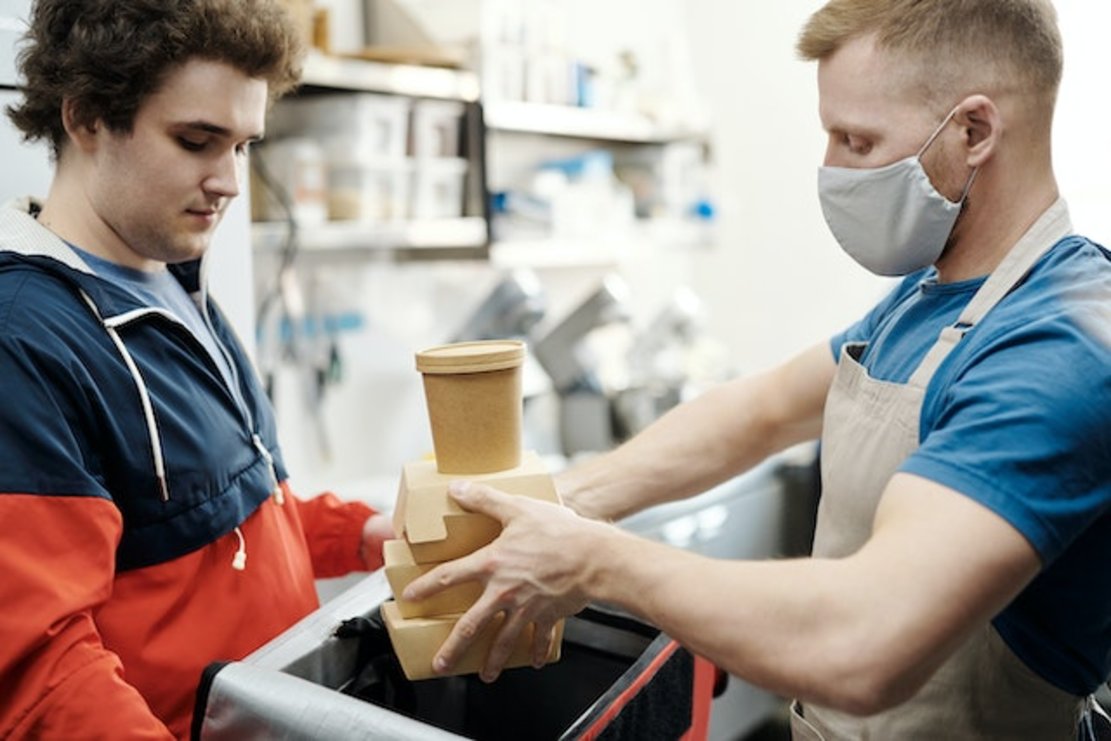
That alone saves business owners time and effort.
So what’s the downside of third-party delivery companies dominating this year’s trends in food delivery? For one, the cost. All of these outside services charge fees to both restaurants and customers per transaction.
This results in thousands of dollars of lost profits for restaurants and can deter clients from wanting to order food.
The second less favorable thing about using third-party delivery services is the loss of autonomy and control. If the people delivering your food and taking orders aren’t part of your team, you can’t guarantee perfect service.
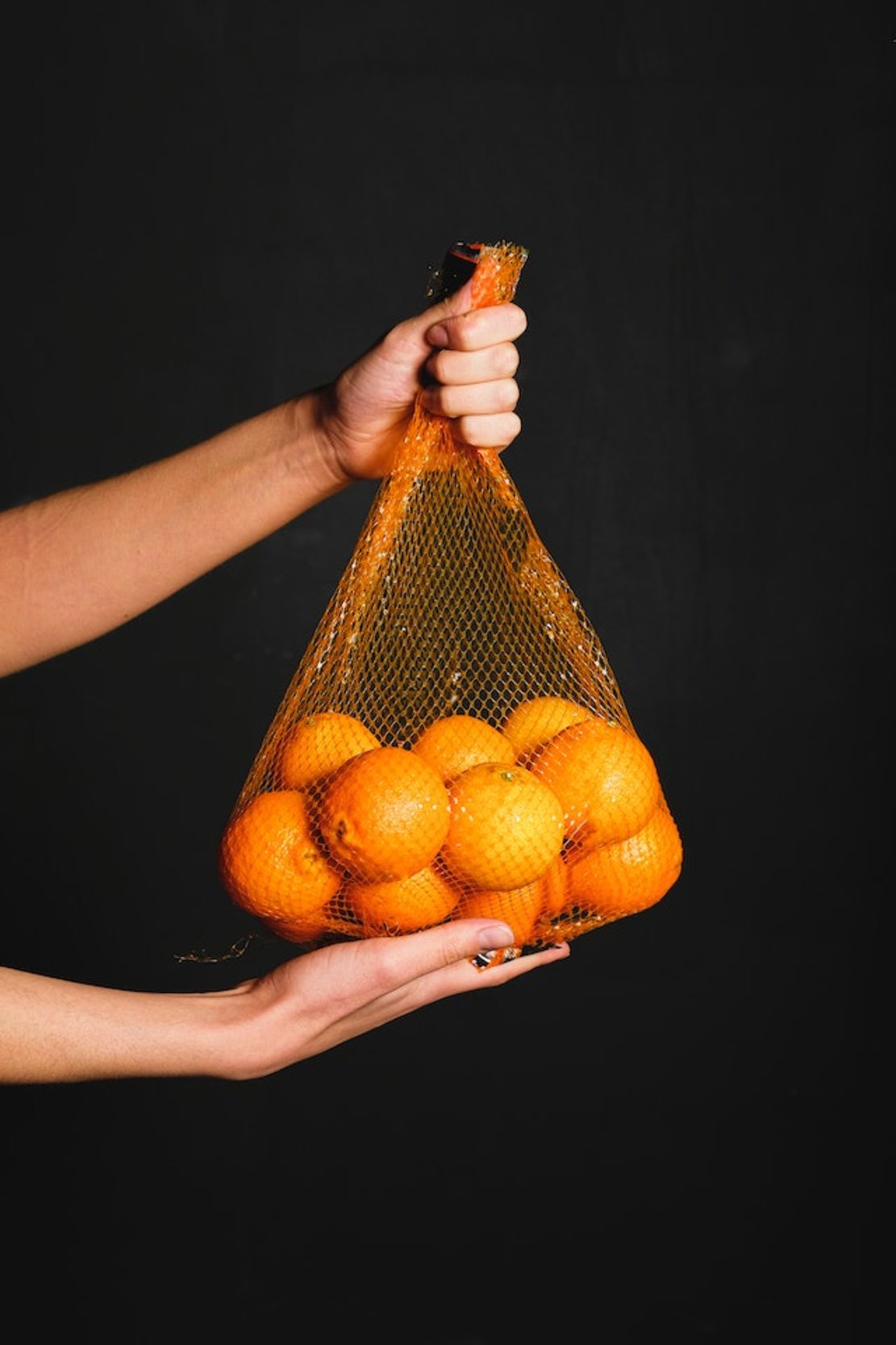
Food Delivery Trends: Grocery Delivery
Another one of the top delivery food trends is grocery delivery service. Online delivery isn’t just about getting restaurant food or fully prepared meals. More and more, folks are turning to delivery services to avoid going to grocery stores and to save time.
Again, this was another trend that skyrocketed during COVID’s peak. However, even now, online grocery sales remain healthy and steady.
You’ll see online grocery delivery services through third-party apps or directly from grocery stores. Large grocery chains have even moved their online ordering model to function on fulfillment centers.
This means they’ll use one store as the central hub for orders while other stores get their supplies from it.
However, the grocery delivery isn’t exactly perfect. Grocery stores have more complicated stock and a larger audience to satisfy. They’re more likely to run out of the exact brand or item a customer wants.
Or, it may be too time-consuming to upload all of their inventory onto a delivery app. That’s why we recommend grocery store owners start small with delivery services to make sure it’s sustainable and practical.
Some statistics immediately jump out at you when it comes to food delivery, so, we’ll start with those that have fuelled the huge growth of this service.
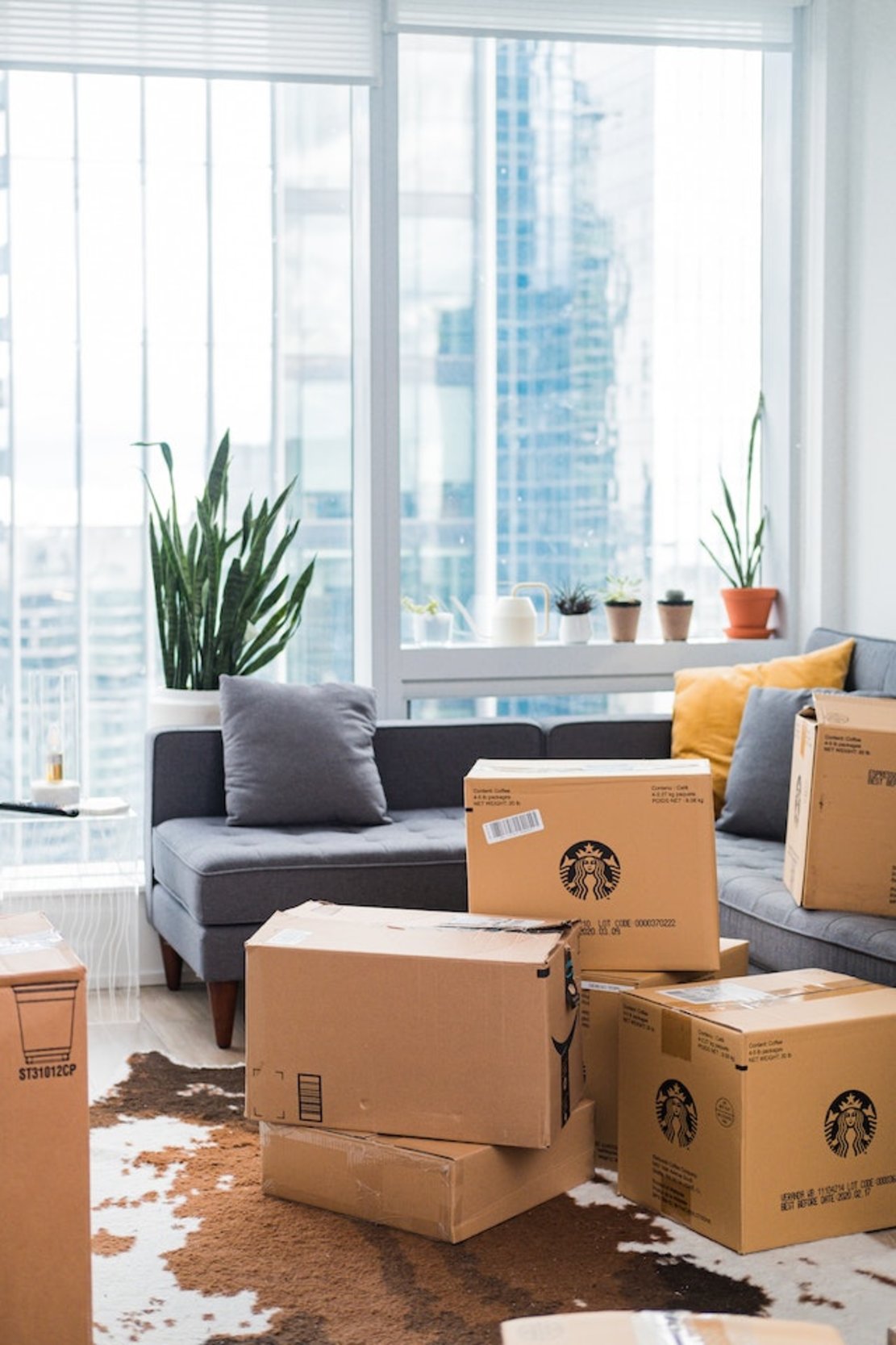
Food Delivery Trends: Subscription-Based Delivery Services
Food delivery trends also include subscription services. What does this mean? Well, it runs the gamut.
It could mean a membership to a food delivery app for discounted deliveries. Or a meal kit service where buyers get only the ingredients they need for specific meals from a subscription company. Think of Hello Fresh or Blue Apron.
The benefit of food delivery subscriptions is clear. They create a built-in consumer base, increase customer loyalty, and incentivize guests to buy your services. If someone already has a subscription with you or a built-in deal, they’ll choose your business over another.
Small businesses can take advantage of online food ordering subscriptions too. Try offering subscription plans to your most loyal customers first.
Build in a discount if they sign up and come up with fun ideas to keep your subscription interesting. Like themed meals per month or different specials per week.
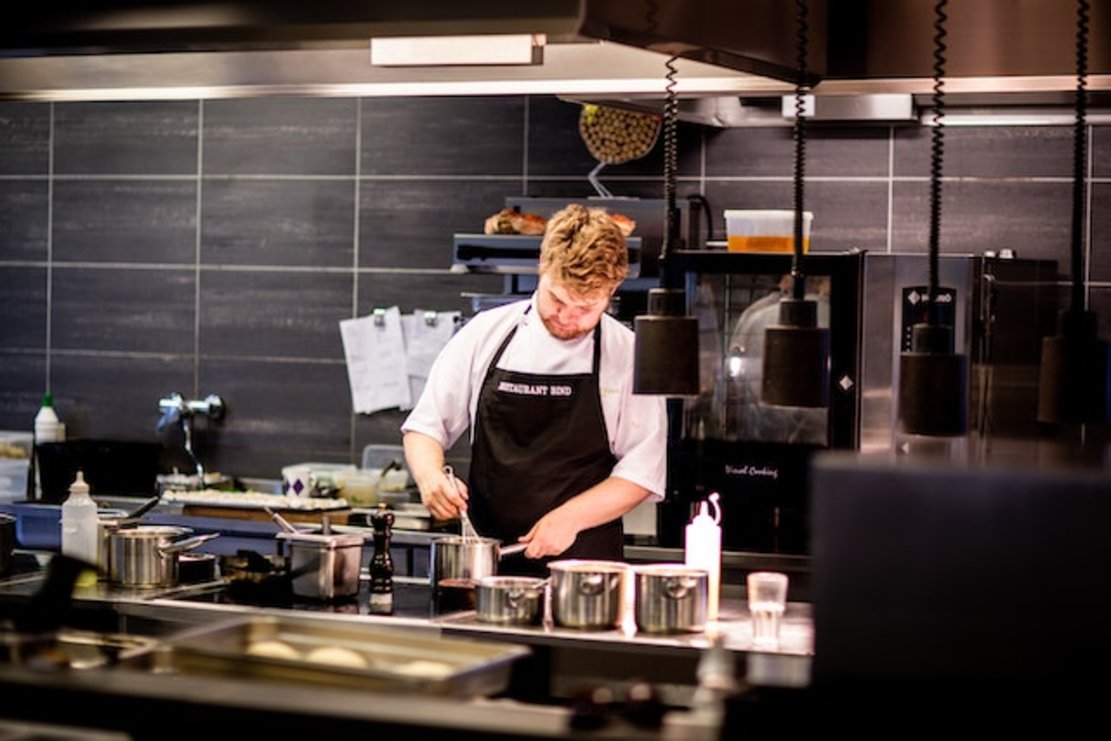
Food Delivery Trends: Cloud Kitchens
Cloud kitchens aren’t a mystical food prep land in the sky. This is a term for a restaurant that doesn’t exist in the traditional brick-and-mortar sense. Instead, a business usually rents out a food prep space to make food strictly for delivery services. They don’t have a physical location; they just do their business online.
They’re a relatively new phenomenon in the restaurant industry, also called ghost kitchens or dark kitchens.
The obvious plus sides to these food delivery trends are the lack of operational expenses. You don’t have to have a whole wait and kitchen staff or rent/buy an entire restaurant space.
Additionally, you can keep your menu small to what you know will sell on food delivery services. That means less ordering and less food waste.
If you already have a restaurant space, you can always use your own facilities as a ghost kitchen. For example, if you’re having trouble advertising your food truck, try supplementing your income with a cloud kitchen.
Just sell a more limited version of your menu items there. Or, if you’re looking for a way to break into the food space, this is a low-cost, low-risk option.

Food Delivery Trends: Delivery Management Software
If you’re hesitant to try out food delivery trends because of the lack of control, this is for you. Delivery management software is the newest trend returning oversight to businesses.
With management software, you can:
- Oversee your delivery operations.
- Streamline the process.
- Keep up with customer demand.
- Use delivery data to improve customer experience.
This technology tracks where orders are in their lifespan and gives you a complete picture of busyness. It can juggle multiple deliveries for you and even track your delivery revenue.
Investing in a service like this is a great way to see rapid growth in your restaurant without sacrificing quality.

Food Delivery Trends: In-House Delivery Services
Another way that you can have more ownership over your online food delivery service is by moving the operation in-house.
This is possibly the biggest new trend in the food delivery market. Tired of third-party delivery service fees and wanting more oversight, restaurateurs are piloting their own delivery businesses.
By making the switch, you’ll also have unfettered access to your customer data and delivery data.
They do this via phone lines, websites, and Google Maps Business listings. Customers often respond favorably to these alternatives. Why? Because they like supporting local restaurants, they love directly, and it’s often cheaper.
Add this to your offerings by updating your Google listing with an “Order” button. You can always ease into delivery operations by only using a limited menu. Or only delivering within a certain radius so you keep transportation costs low.

Custom Menus
Another one of the top trends in food delivery is custom menus. The idea is to offer an exclusive or tailored menu only for online food ordering.
This encourages folks to try out your delivery service because they love feeling like they’re getting something special. You’ll stand out in their memory, and they’ll likely tell their friends about your unique menu.

Food Delivery Trends: Virtual Cooking Classes
With the popularity of subscriptions and meal kits, it’s easy to see that consumers don’t just want convenient meals. They’re also craving experiences and learning. Take that to the next level with virtual cooking classes.
Classes are part of the upcoming delivery food trends because they will increase your audience engagement and loyalty. If you sell meal kits or subscription boxes, you could release videos to accompany them. Film your chef cooking a meal or giving top kitchen tips and hacks.
Or, if you’re not ready to go into video production, start a food blog on your company website. Add recipes, pairing ideas, and other information to entice existing and potential customers.

Food Delivery Trends: Eco-Friendly Delivery
The last of the food delivery trends that we’re going to share today is eco-friendly delivery. Nowadays, every corner of the global market is concerned with sustainability and eco-consciousness.
Customers want more earth-friendly ways to enjoy goods and services, and businesses are taking notice.
If you add delivery operations to your restaurant, opt for climate-aware solutions. For example, keep your delivery radius small. That way, your delivery runners could reach their destinations on foot or by bike. Or, they’ll spend less gas with closer stops.
You could also discount meals for people who allow your drivers to “carpool” their delivery with others in the area. Or, you could collaborate with multiple restaurants to use one car for several local deliveries.
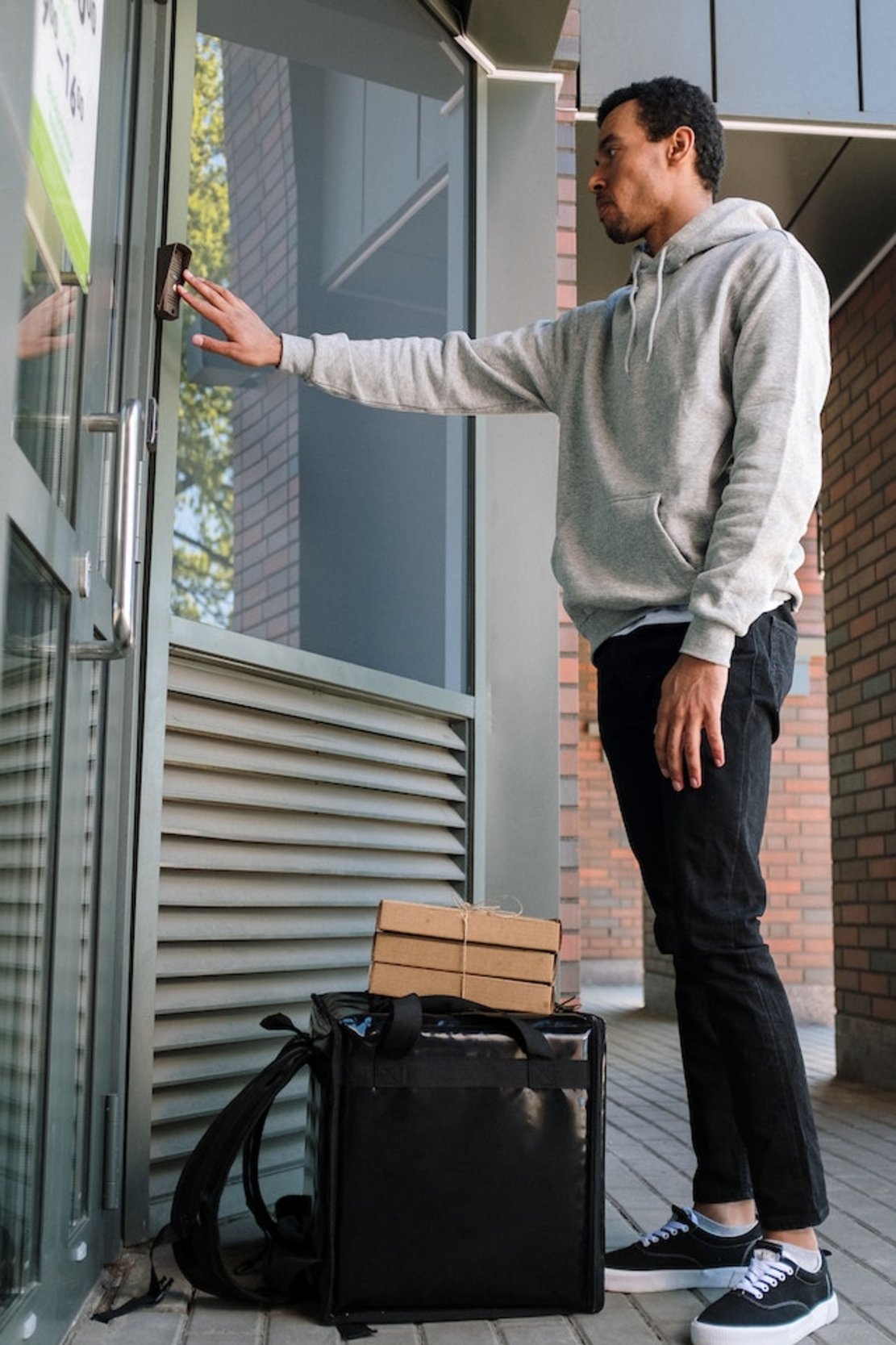
Biggest Food Delivery Industry Trends To Watch For
We’ve walked you through some of the most popular current trends in food delivery. Now, let’s take a look at the future of the dining space.
Here are a few of the biggest upcoming food delivery industry trends worth keeping tabs on.
Upcoming Food Delivery Trends: Hyper Local Food Delivery
Remember how we mentioned earlier that one of the biggest drawbacks to food delivery was the high third-party fees? Hyperlocal food delivery is a way to combat that. What this refers to are smaller, local, community-based delivery businesses.
They’re quickly emerging as a popular replacement for big companies like Uber Eats because they charge a much smaller commission. This means it’s much more feasible for independent restaurants to offer delivery.
Potential Food Delivery Trends: Automated Delivery
Second on our list of future food delivery trends: the drones are coming! Instead of relying on human labor to deliver meals, big conglomerates are shifting their model towards automated delivery methods. These include using drones and robots to send out and deliver food.
Amazon Air is one of the most prominent examples of using drones for any kind of delivery. Food-specific delivery companies haven’t adopted this model yet, but it’s definitely on the horizon.
New Food Delivery Trends: Stacked Delivery
Another trend that delivery platforms are currently exploring and gaining popularity is stacked delivery orders. The idea here is to increase efficiency by carrying out multiple deliveries simultaneously.
For example, if a restaurant receives several orders in the same area simultaneously, they’ll hand them all to one driver. Then, the driver will drop them each off along their route.
This is an intelligent way to increase order output while saving gas, transport, and labor money.

Using WiFi To Get In on Food Delivery Trends
We hope you found this article helpful in learning about trends in food delivery and how to take advantage of them.
One last tip: use WiFi marketing to support your online food-ordering business.
You must have internet to use online food delivery trends and services. So why not turn your WiFi into a selling point and a powerful marketing tool? Expand your potential with WiFi marketing software like BeamBox.
BeamBox is an all-in-one internet solution that gives your customers free WiFi and hands you valuable data collection opportunities. With our captive portals, you can collect email addresses and phone numbers for marketing. Or you can direct guests to your website or social media pages whenever they log on to your network.
Ready to grow your business? Start your BeamBox free trial today!
Get Started With Free WiFi Marketing
Beambox helps businesses like yours grow with data capture, marketing automation and reputation management.
Sign up for 30 days free


